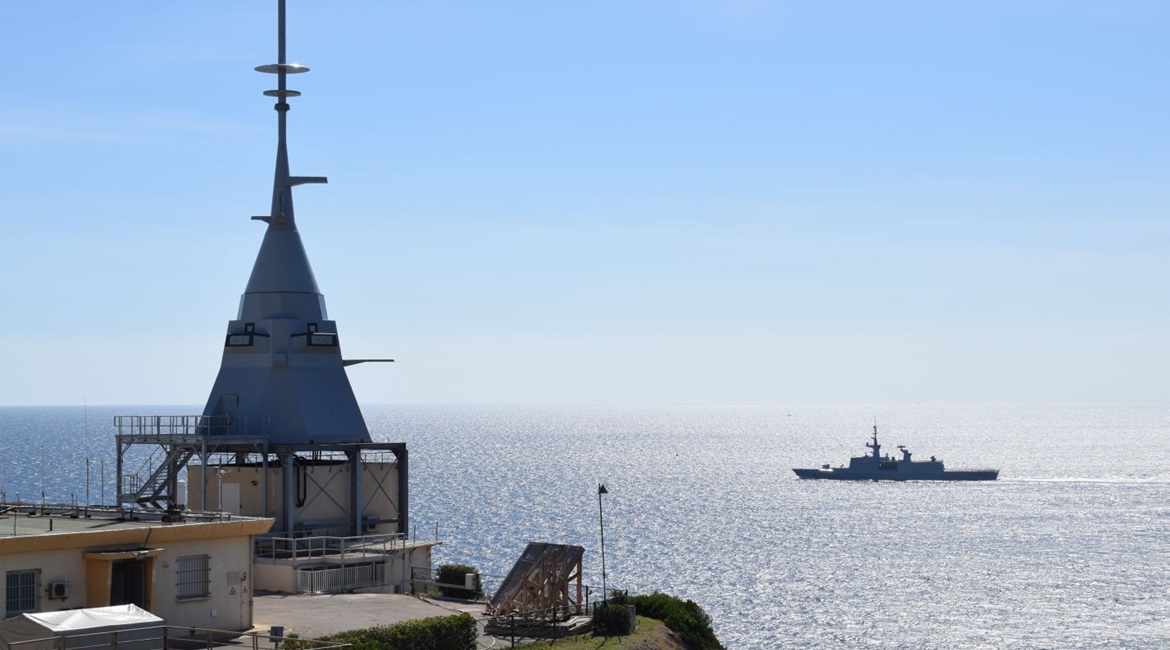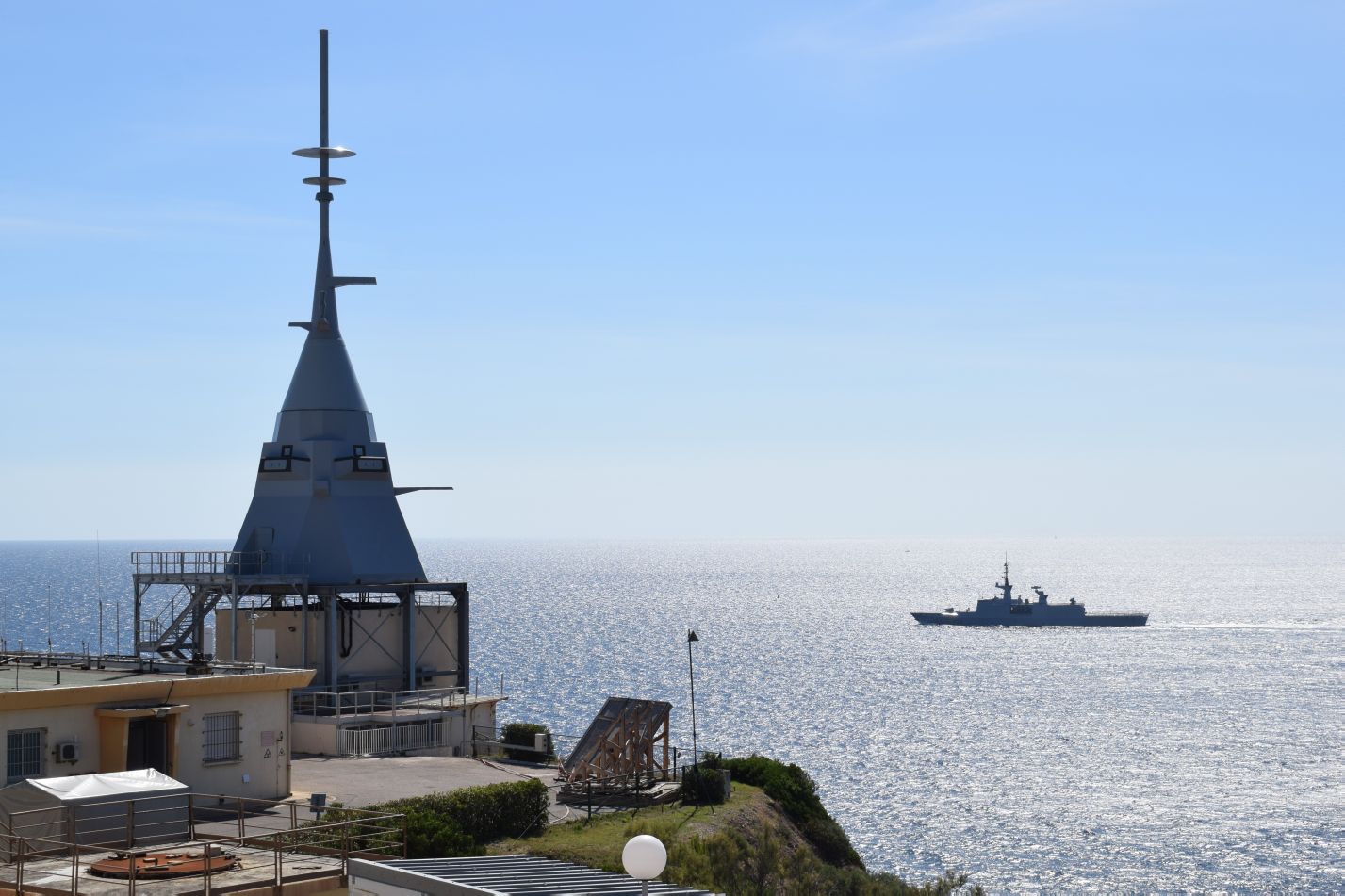
Combat management system (CMS) and sensor trials for the French Navy’s future Fregate de defense et d’intervention (FDI) frigates are set to start next month, the Direction générale de l’armement (DGA) has confirmed.

An FDI integrated mast, developed by Naval Group, has been erected at the SESDA facilities to host the Sea Fire radar. (IHS Markit/Emmanuel Huberdeau)
During a 27 September briefing, the DGA said the SETIS CMS and sensors are currently being fitted in the SESDA [Site d’expérimentation des systèmes de défense aérienne] shore integration facility in Saint Mandrier, on the southern coast of France. Naval Group, Thales, and the DGA will start testing the systems in November, ahead of the delivery of the first FDI in 2023, a DGA spokesperson said.
The FDI’s principal long-range sensor is the four-face Thales Sea Fire active electronically scanned array (AESA) radar. The first AESA face was delivered to Saint Mandrier in July and has been operational since September. Only two arrays will be tested on the DGA test site, with the second to be delivered in November.
An FDI integrated mast – developed by Naval Group – has been erected at the facilities to host the Sea Fire radar. This will also host the four identification friend or foe (IFF) arrays, electro-optic/infrared (EO/IR) sensors, and electronic warfare (EW) antennas.
Other systems that will be integrated at the SESDA test site include Safran’s Paseo XLR EO/IR multi-sensor system, a common fire installation provided by MBDA (the hardware and software programming a missile’s launch), EW equipment, and a Thales Bluegate IFF system. Although the integrated mast has been built on top of a ridge about 20-40 m above sea level, some equipment, such as the EO/IR sensors, will be tested at sea level for more realistic conditions.
Looking to read the full article?
Gain unlimited access to Janes news and more...




